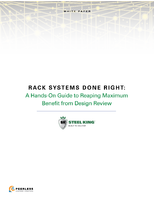Energy Savings on Process Heating Units
A leading supplier of performance polymers with products used in a wide range of applications, including adhesives, coatings, sealants, lubricants, etc. was increasing the production capabilities of one of its four polymer process lines. The increase in production capabilities would come from the upgrade of several process heating sources such as heat exchangers and dryers as well as enhancing the safety of these systems to accommodate increased production loads.
The company worked with the Regional EPA in their Pollution Prevention (P2) Program to add an appropriate-sized oxidizer and enhance their flare operations for its increased production capabilities and to upgrade their LFL monitoring system on their batch dryer for safety reasons.
The goal was to increase energy efficiencies and optimize productivity while reducing emissions, thus saving money.
In all cases, the company chose to use Control Instruments' Gas Detection Analyzers due to their ability to read multiple gases at different concentration levels accurately under rugged conditions. All products operate on the same platform, providing for ease of operation and maintenance.
After 2.5 years of providing continual results to the EPA, the company has been able to show dramatic cost savings and high efficiencies of their processes:
• Flare - They have found that their waste gas is typically ~ 600 BTU/scf, which means that they do not need to use any natural gas to keep their flare operating! They are sustaining their flare from their own process gases.
• Oxidizer - They have continuously proven by using the readings of the Model 650 FID that their Catalytic Oxidizer is operating effectively and abating their VOCs at lower temperatures, and have thus been allowed to reduce the Destruction Efficiency rating from >95% to 90%; which is another dramatic fuel savings, not to mention a huge savings on catalytic bed replacement!
• Dryers - By upgrading the LEL systems, they have been able to increase product throughput of their process accurately and safely, which has resulted in improved delivery times.
Read the entire case history for full details:
http://www.controlinstruments.com/documents/energy-savings-process-heating-units-case-history.




